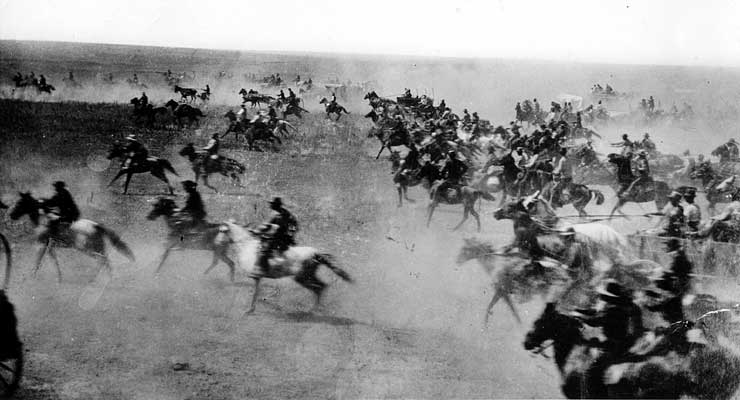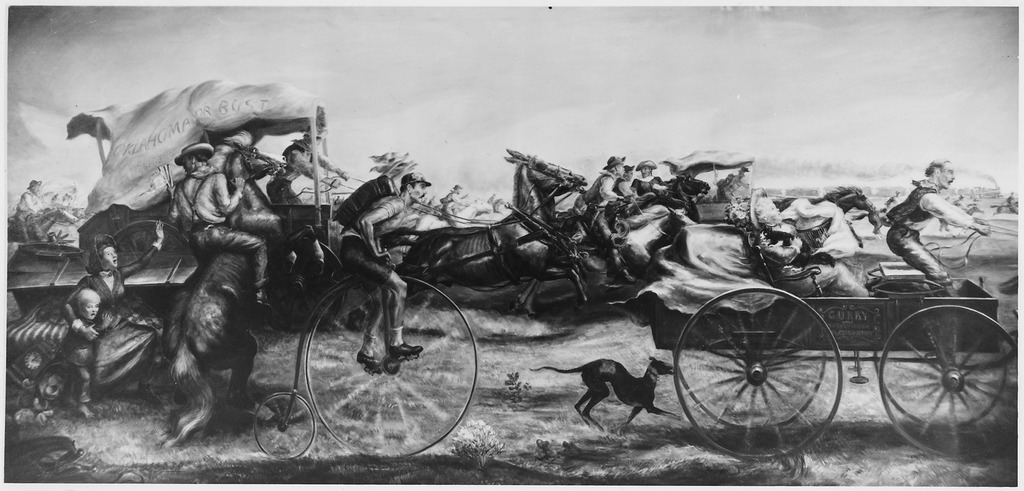 he Oklahoma Land Rush of 1889 stands as a pivotal moment in American history, capturing the spirit of westward expansion and the pursuit of the American Dream. This remarkable event unfolded as thousands of eager settlers raced to claim their share of unassigned lands in the Oklahoma Territory. With its rich history and lasting impact, the Oklahoma Land Rush provides a fascinating glimpse into the challenges and opportunities that shaped the United States during this transformative period. In this article, we delve into the amazing history behind this extraordinary event, exploring its origins, the rush itself, and its legacy in American society.
he Oklahoma Land Rush of 1889 stands as a pivotal moment in American history, capturing the spirit of westward expansion and the pursuit of the American Dream. This remarkable event unfolded as thousands of eager settlers raced to claim their share of unassigned lands in the Oklahoma Territory. With its rich history and lasting impact, the Oklahoma Land Rush provides a fascinating glimpse into the challenges and opportunities that shaped the United States during this transformative period. In this article, we delve into the amazing history behind this extraordinary event, exploring its origins, the rush itself, and its legacy in American society.
Origins of the Oklahoma Land Rush
The seeds of the Oklahoma Land Rush were sown long before the fateful day in 1889, as a series of events and policies shaped the landscape for this historic event.
Indian Removal and the Dawes Act: During the early 19th century, Native American tribes were forcibly removed from their ancestral lands and relocated to the Indian Territory, which would later become Oklahoma. The Dawes Act of 1887 further opened up the territory for settlement by allotting individual land parcels to Native Americans and declaring the remaining lands as “surplus.”
Railroad Expansion: The rapid expansion of railroads across the United States played a crucial role in fueling the desire to settle new territories. The completion of the Atchison, Topeka and Santa Fe Railway in 1887, which reached the border of the Oklahoma Territory, increased accessibility and sparked interest in the region.
The Unassigned Lands: The Unassigned Lands in the Oklahoma Territory, covering approximately 2 million acres, became the focal point of anticipation and speculation. With no assigned tribal ownership, these lands held the promise of opportunity and prosperity for those willing to stake their claim.
The Oklahoma Land Rush of 1889
On April 22, 1889, the Oklahoma Land Rush commenced, forever etching its mark on the pages of American history. The events of that day unfolded in a whirlwind of excitement, chaos, and determination.

The “Boomer” Movement: Prior to the official opening of the Unassigned Lands, a movement known as the “boomers” emerged, advocating for the lands’ immediate settlement. These individuals, eager to claim their share, set up makeshift settlements along the border, waiting for the moment when the land rush would be declared.
The Run for Land: At noon on April 22, a cannon blast signaled the start of the land rush. Thousands of hopeful settlers, some on horseback and others on foot, surged forward, staking their claims in a race against time. The sight of wagons, tents, and people spread across the prairie was a spectacle to behold.
Challenges and Triumphs: The land rush presented numerous challenges for the settlers. The lack of infrastructure, limited supplies, and harsh weather conditions tested their resilience and determination. Despite the hardships, many settlers persevered and established thriving communities, marking the birth of towns such as Oklahoma City and Guthrie.
Legacy of the Oklahoma Land Rush
The Oklahoma Land Rush of 1889 left an indelible mark on American society and continues to shape the state’s identity and culture. Its legacy can be observed in various aspects, from land policies to cultural heritage.
Land Policies and Development: The land rush prompted a reassessment of land policies, leading to the passage of the Homestead Act of 1890. This legislation allowed settlers to acquire up to 160 acres of land, fueling further westward expansion and contributing to the development of the American frontier.
Cultural Impact: The land rush became ingrained in the collective memory of the American people, symbolizing the pioneer spirit and the pursuit of opportunity. It inspired literature, art, and films, perpetuating the mythos of the American West and the enduring spirit of adventure.
Economic Transformation: The settlement of Oklahoma Territory brought economic growth and opportunities. Agriculture flourished, with settlers cultivating the fertile lands. The discovery of oil in the state during the early 20th century further transformed the region, solidifying its economic significance.
The Oklahoma Land Rush of 1889 remains an extraordinary chapter in American history, embodying the dreams, challenges, and triumphs of those seeking a better future. From its origins in Native American displacement to the frenzied rush for land, this event shaped the destiny of the Oklahoma Territory and left a lasting legacy in the annals of American society. The spirit of the land rush, filled with hope and ambition, continues to resonate, reminding us of the enduring power of the human spirit and the pursuit of the American Dream.
Avid Writer with invaluable knowledge of Humanity!
Upcoming historian with over 30 million views online.
“You make your own life.”





